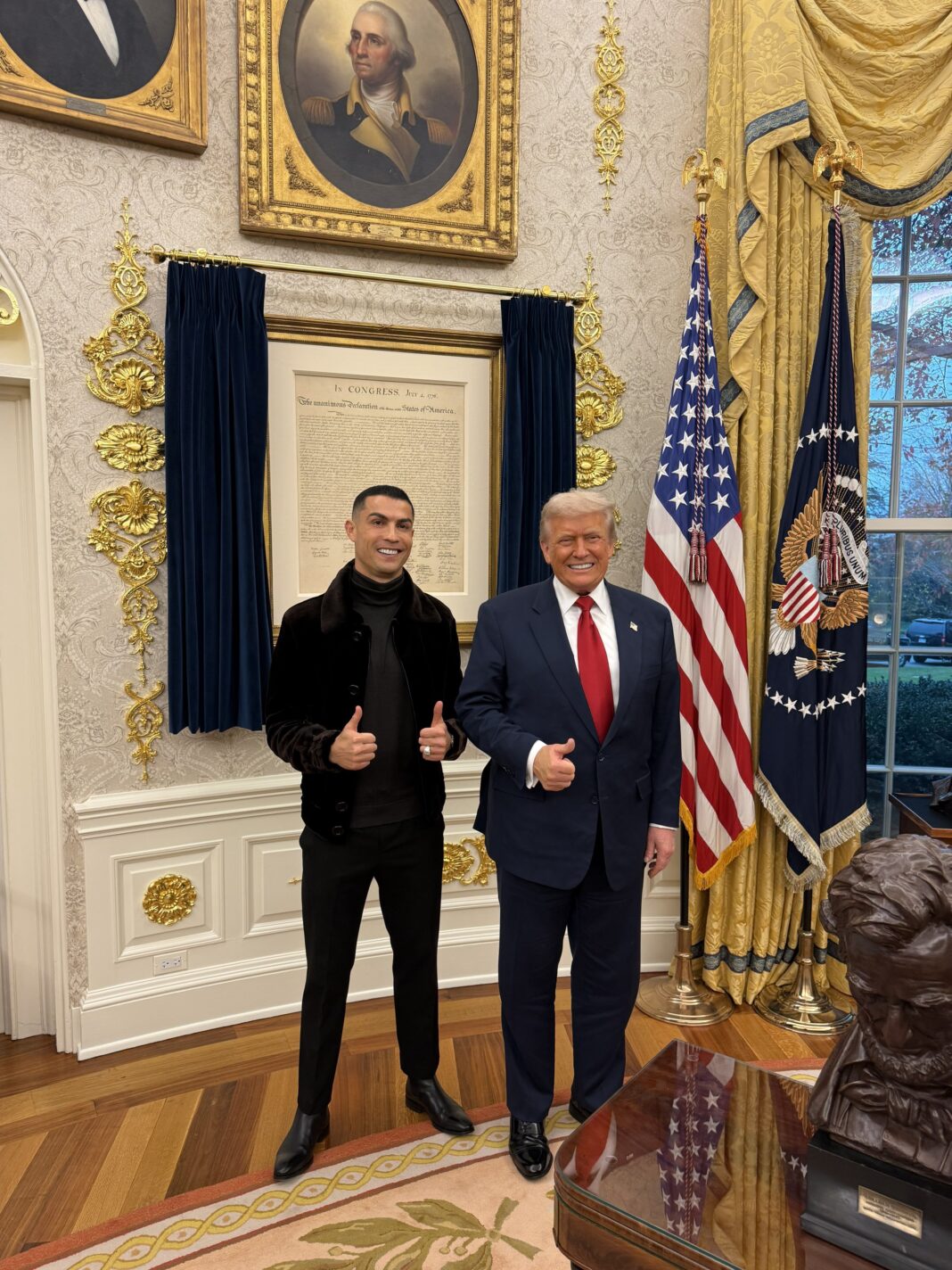On Tuesday, November 18, 2025, Cristiano Ronaldo attended an exclusive state dinner at the White House, hosted by former U.S. President Donald Trump in honor of Saudi Arabia’s Crown Prince Mohammed bin Salman. Ronaldo, who currently plays for Al-Nassr in Saudi Arabia, was seated prominently in the East Room alongside world leaders, business magnates like Elon Musk and Tim Cook, and FIFA President Gianni Infantino.
During his remarks, Trump publicly praised Ronaldo, calling him one of the greatest players ever — using language that resonated strongly with social media, where the White House tweeted “Two GOATs. CR7 x 45/47.” He also shared a personal anecdote: his son Barron, a teenager, is a huge fan of Ronaldo, whom Trump said he had introduced to him.
Ronaldo later shared a heartfelt message on social media, thanking Trump and his wife for their “warm welcome” and expressing his desire to “do my part as we inspire new generations to build a future defined by courage, responsibility and lasting peace.” He also posted images taken in the Oval Office, where he and Georgina Rodríguez, his partner, accepted a golden key from Trump – a framed symbol of honor and diplomacy.
The timing and context of the dinner are deeply symbolic. It coincided with the Crown Prince’s first U.S. visit in seven years, following a period of diplomatic tension dating back to 2018. Ronaldo’s presence underscores the increasing role of sports diplomacy in Saudi Arabia’s global strategy. He has become a face of the kingdom’s sporting ambitions since joining Al-Nassr, a club owned by Saudi sovereign wealth interests.
For Ronaldo, being honored in the White House represents more than celebrity: it aligns him directly with geopolitical influence. His relationship with Saudi Arabia and now this high-profile U.S. engagement boost his status as more than an athlete – a symbolic bridge between nations. But the moment is not free of controversy. Critics argue the optics of a sports star being feted at such a politically charged event reflect the darker side of soft-power projection.

